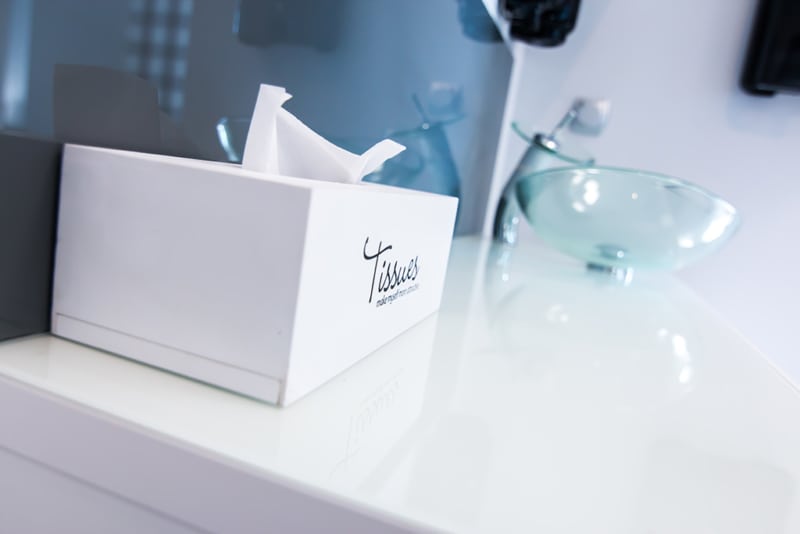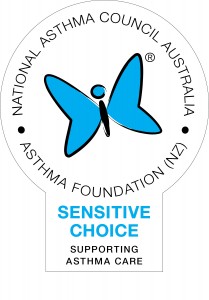As parents, we know that prevention is always better than a cure. But when we can’t see the things that are adversely affecting the health of our little ones, it can be pretty tough to remove them from the picture. More and more we are learning about the impact of airborne triggers on asthma and allergy sufferers. The good news is that some simple steps at home can make a world of difference to the health of your child.
Understand what you’re dealing with
The first step is always to seek professional medical advice. Once you have a diagnosis from your doctor and any necessary medical interventions are in place, learn about specific airborne triggers that can either make breathing difficult or set off an asthma attack. Some of the most common airborne triggers are dust-mites; pollen; mould spores; and dog and cat (pet dander). Of course, it’s almost impossible to protect little ones from these all of the time, but by controlling the environment at home, you can make a big difference.
Removing the unseen
Here are a few things that you can do to help your child breath easier:
Step one: Identify and understand the triggers affecting your little one: Whether it is dust mites, cat and dog allergens or other airborne allergens, start your action plan by determining what they are. As with most things, different triggers affect different people so if you are having difficulty working out which triggers are affecting your little one, book in a visit to the doctors for a prick test. Keeping a diary of your child’s asthma attacks can also help you to determine what sets them off, ie cold weather, sports day, high pollen count.
Step two: Manage your triggers:
For those who suffer from asthma attacks or allergies caused by pet dander or dust mites, keeping your child’s environment clean and dust-free can help to reduce the number of attacks. An air purification system can remove fine allergens and particles including mould and pet dander from the air. Some air purifier models are also capable of heating and cooling and in doing so providing a more healthy environment all round.
-
- Consider different flooring options in your child’s bedroom. Old carpets may harbour dust mites and other allergens so hardwood or laminate flooring may be a better choice. For comfort, add some rugs which can be easily cleaned and aired.
- Don’t forget window coverings – launder regularly to remove dust and pollen blown in from outside.
- Asthma-friendly mattress and pillow covers are available to help reduce night-time attacks.
- Many triggers that can set off asthma and allergies are airborne so an air purification system can make a difference in the home. Some air-conditioners can also remove particulates from the air and heatpumps are excellent at keeping humidity levels down.
- Mould can be an issue for asthma and allergy sufferers and can pose a considerable risk to the health and wellbeing of a home’s inhabitants. Remove mould as soon as possible. Your local DIY store can offer some tips and product advice for dealing with recurring mould.
- Do not smoke indoors, in the car or near children.
- Invest in a quality vacuum cleaner to not only pick up dust and pet dander but also to filter the air that is returned back into the room.
- Opt for products that are allergy-friendly, like those that are approved by the Sensitive Choice programme.
For more, see How to create an asthma free home.
Sensitive Choice
Sensitive Choice® is a community service focused programme for everyone who wants to breathe purer, cleaner, fresher air and reduce allergic reactions. The Sensitive Choice® programme is the only one of its kind in New Zealand that approves asthma and allergy-aware products or services through an independent panel of experts. You’ll find the reassuring ‘blue butterfly’ symbol on hundreds of products – from bedding to building products, from cleaning agents to carpets, from air purifiers and vacuum cleaners to the very paint you put on your walls.
You can find a full list of approved products and services on the Asthma Foundation website – just look for the blue butterfly and make a sensitive choice.
Help yourself: Download a free leaflet with helpful advice ‘Living with Asthma and Allergies – a guide to non-medical products‘
This article contains general information only and is not intended to replace advice from a qualified health professional.
Read more on Kidspot:
- Tips for keeping kids warm at night
- 8 tips to manage asthma
- Review: Dyson Pure Hot+Cool Link Purifier Heater








This is great information. I’m asthmatic, my triggers are sudden changes in temperature, dust and pollen as well. My asthma is mild, but it has gotten harder to manage in the last 5 years. I recently went back to the doctor and was given a preventative inhaler for the first time. It was a game-changer, I didnt know i could breath normally like that just by managing my asthma daily with this preventer. It is very important to get medical advice and to continue to get advice even after diagnosis if you sense things have changed.
We have allergies in our house in relation to dust I have to vacuum every day and dust everything often it’s a bit of a pain but when it minimises sneezing and itchy eyes etc. I have never heard of the sensitive choice programme but will be looking it up now.
Must remember sensitive choice and asthma awareness page. They sound like great help pages for me as I have a lung condition and also have allergies sneezing itchy skin etc. Drives me crazy at the best of times. Definitely going to save these pages to my phone and read up on help and advice I can gain from this. Thanks kidspot